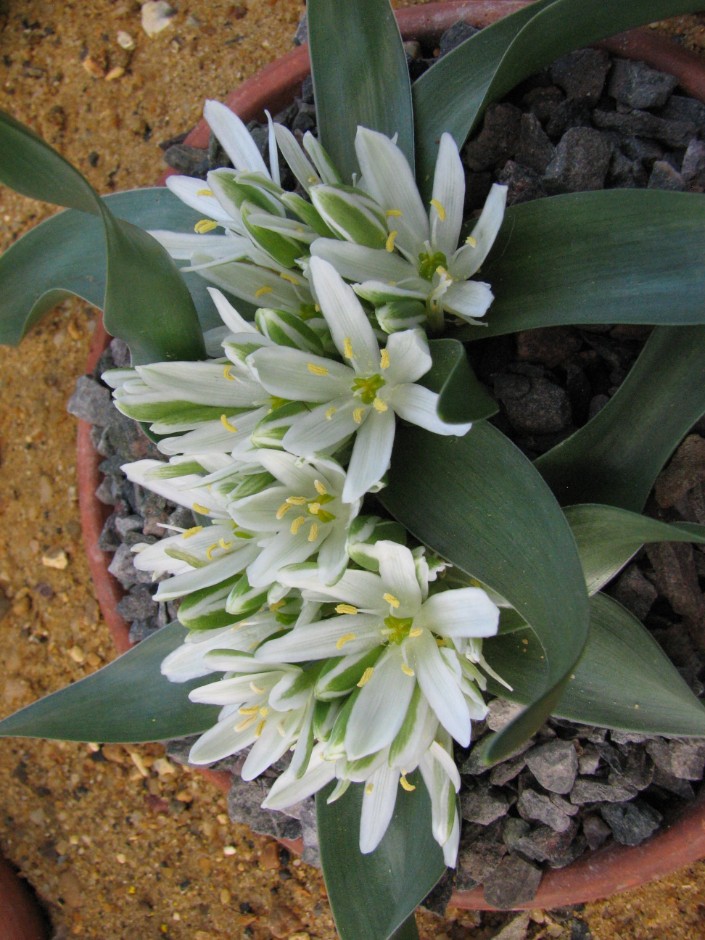Ornithogalum lanceolatum
lance-leaved star of Bethlehem
A dwarf, bulbous perennial producing basal rosettes of lance-shaped, shiny, bright green leaves. In spring it produces compact, almost stemless, clusters of white, star-shaped flowers striped green on the outside

Size
Ultimate height
Up to 10cmTime to ultimate height
1–2 yearsUltimate spread
0–0.1 metreGrowing conditions
Moisture
Well–drainedpH
Acid, Alkaline, NeutralColour & scent
| Stem | Flower | Foliage | Fruit | |
| Spring | Green White | Green | ||
|---|---|---|---|---|
| Summer | ||||
| Autumn | ||||
| Winter |
Position
- Full sun
- Partial shade
Aspect
West–facing or South–facing
Exposure
Exposed or Sheltered Hardiness
H6Botanical details
- Family
- Asparagaceae
- Native to GB / Ireland
- No
- Foliage
- Deciduous
- Habit
- Bushy
- Potentially harmful
- Harmful if eaten. Wear gloves and other protective equipment when handling TOXIC to pets if eaten (dogs, cats, rabbits, rodents) - see the HTA guide to potentially harmful plants for further information and useful contact numbers
- Genus
Ornithogalum are bulbous perennials with linear or strap-shaped basal leaves and racemes, sometimes contracted, of star-shaped or cup-shaped, white, yellow or orange flowers
- Name status
Correct
- Plant range
- S Turkey to Israel
How to grow
Cultivation
Plant bulbs in autumn, 10cm deep, in well-drained soil in full sun; tolerant of partial shade
Propagation
Propagate by seed in containers in a cold frame in autumn or spring or remove offsets when dormant
Suggested planting locations and garden types
- City and courtyard gardens
- Cottage and informal garden
- Coastal
- Patio and container plants
- Rock garden
- Flower borders and beds
Pruning
No pruning required
Pests
Generally pest-free
Diseases
Generally disease-free
Get involved
The Royal Horticultural Society is the UK’s leading gardening charity. We aim to enrich everyone’s life through plants, and make the UK a greener and more beautiful place.